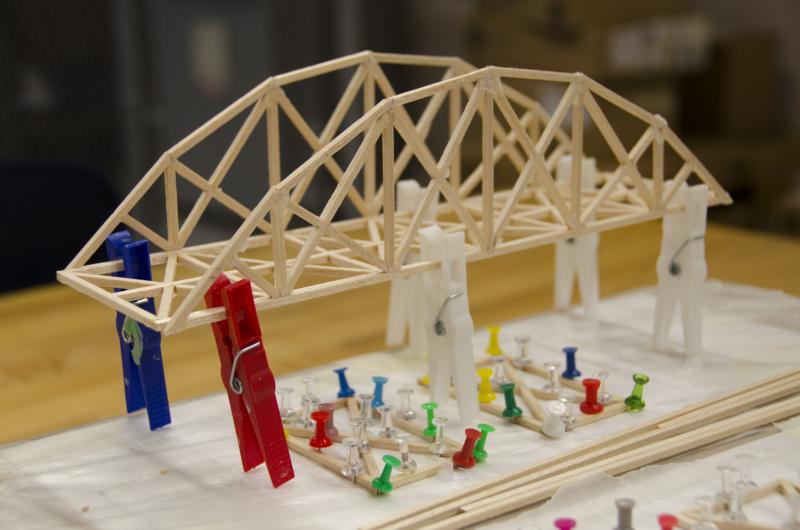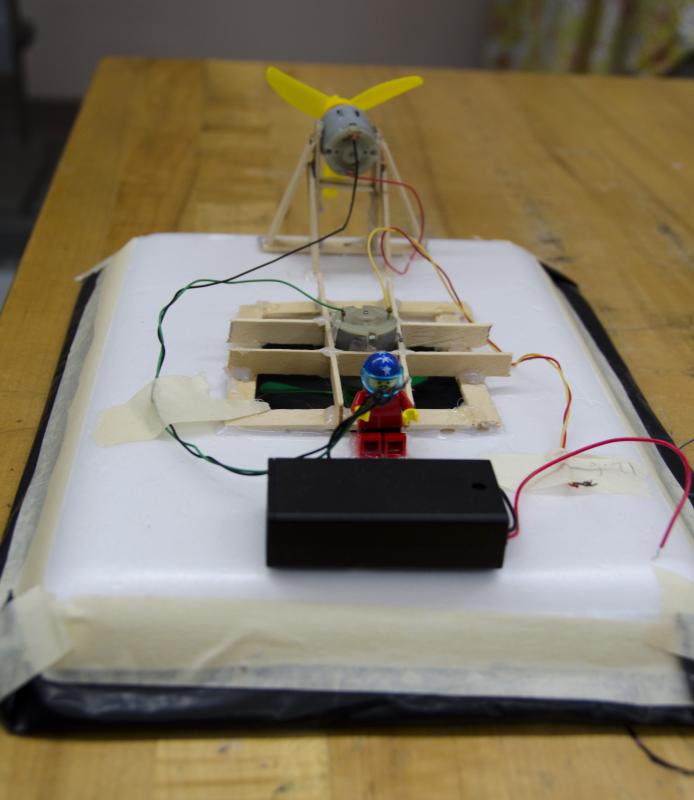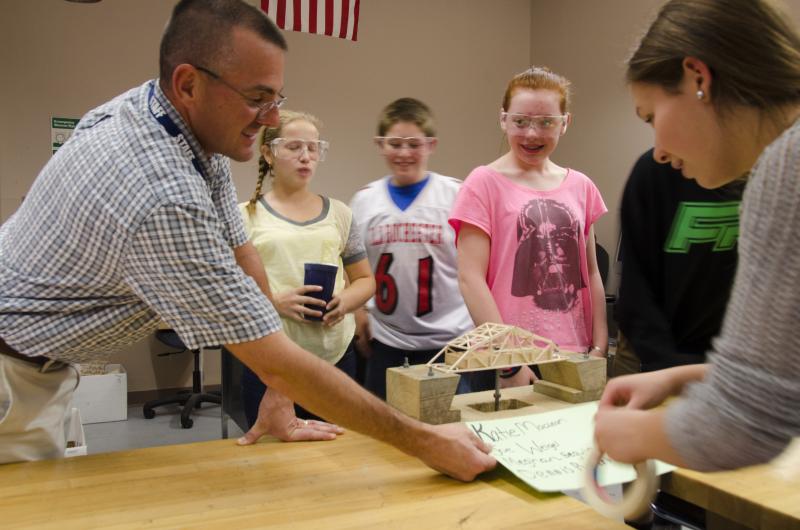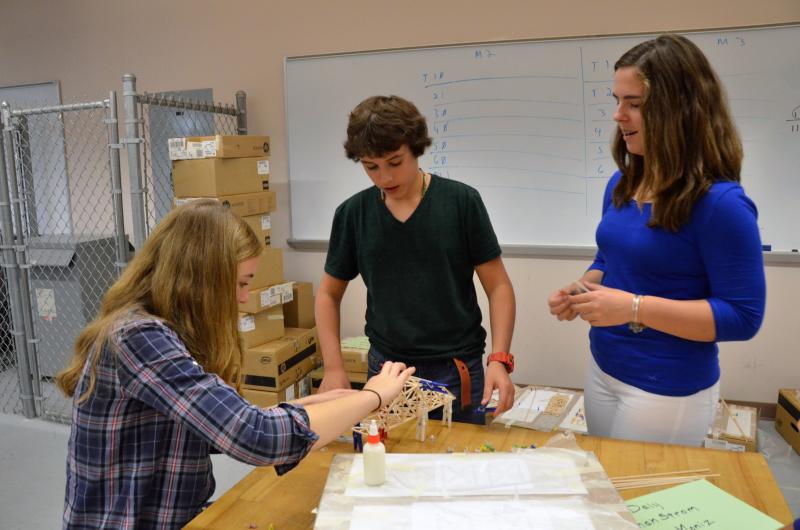With Video: Robots, hovercrafts, bridges give students intro to engineering
Scott McElroy's class is a junior high students’ dream – a place where robots zoom around the room, flying machines lift off from desk tops, and you get to smash things to smithereens (after building them.)
McElroy teaches technology education at Old Rochester Regional Junior High where he applies practical applications to each project.
“As a student, I hated to do things just to do them,” said McElroy. “It’s all applied to something you do in the real world.”
McElroy only gets a cumulative of 90 days with students in their junior high career, during which time they create hovercrafts and bridges, learn to use CAD software as well as prepare for the MCAS exam.
As students go through the design process, they get a basis in engineering. McElroy said he guides his “little engineer design teams” but pushes them to figure out most things for themselves.
“I’ll give them a snippet, and they take over,” he said. “No one is ever going to tell you one hundred percent of the time how to do everything step by step.”
Robots are something kids definitely get into. An exploratory course at the junior high gives students an opportunity to put together a robot and to design commands that mobilize it.
For students who enjoy that project, McElroy will offer an after school course in January to build underwater robots. In September, he received a $350 grant from Seaperch to purchase three robot kits.
The small robots are modeled after larger versions used in research, to monitor oilrigs, and to perform tasks that are too dangerous for humans, said McElroy.
Two years ago, McElroy held a similar class, which had the opportunity to test its robots at Lockheed Martin in Marion.
“The guys at Lockheed were so impressed. They said our kids were just as prepared, if not more prepared, than some of the high school and college students that came in,” McElroy said.
Even for students who only take McElroy’s general technology course, there is plenty of fun to be had. Eighth graders receive 20 sticks of balsa wood and five ounces of glue that they have to make into a load bearing bridge.
Last Friday, several teams tested their bridges, attaching a bucket to the base of the structure and filling it with sand, little by little, until it collapsed – a process that involved a good bit of screaming.
“You’ll be surprised by how much the things will hold,” said student Courtney Vance, whose team built an 11.3 gram bridge that held 25 pounds. “It’s suspenseful, especially when you hear it cracking just a tiny bit.”
McElroy said students get into the project and often take videos of their bridge tests home to add sound effects.
“I wasn’t really into the engineering thing, but it’s really fun building it,” said Riley Knight. “It was really fun converting it into the real life thing.”
Although his students are still young, McElroy said they produce some pretty impressive work.
“They’re better than most people think,” he said. And the interactive projects are perfect for their age group. “They come in here and say, ‘Wow!’ We can build.”
















